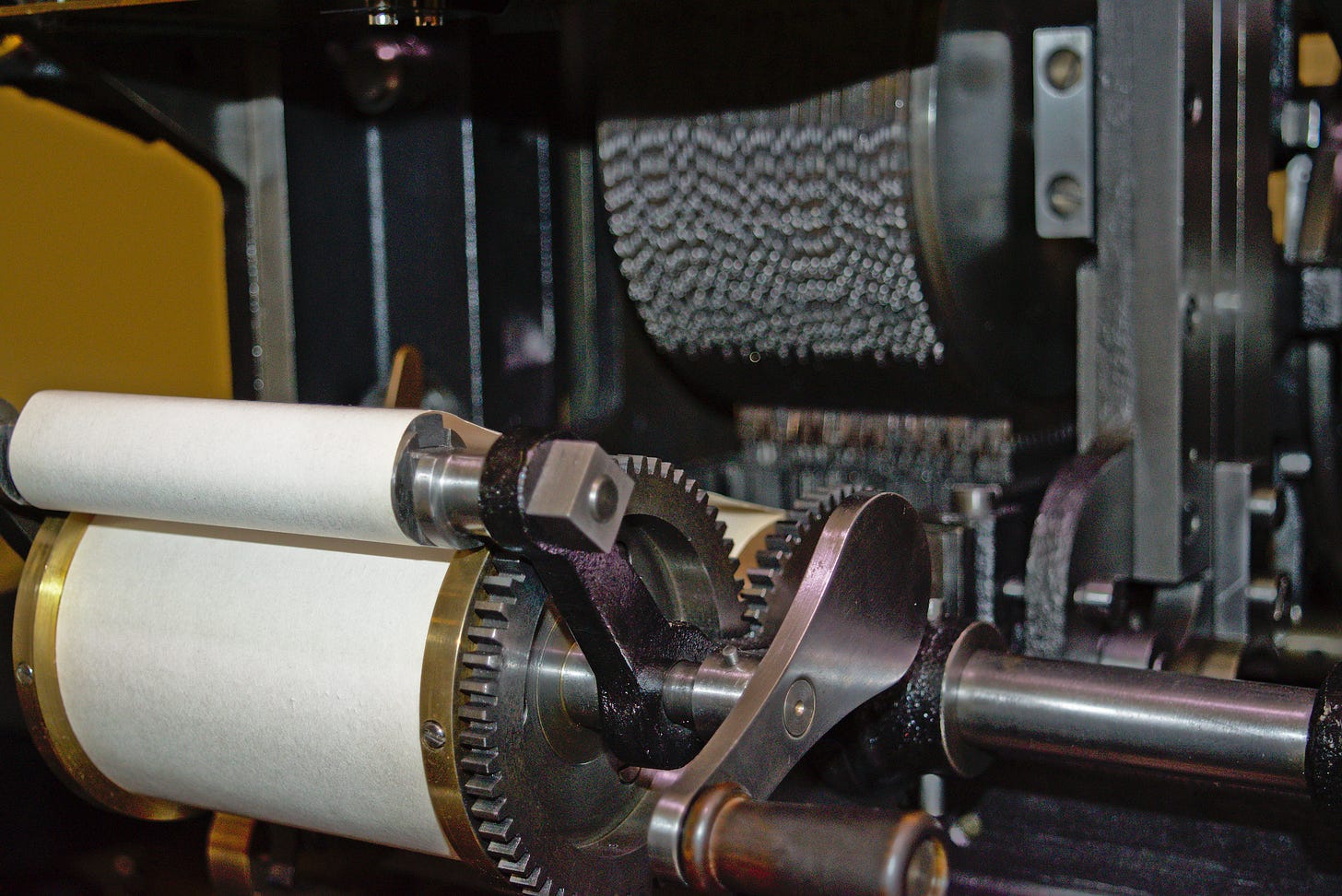
Everyone else was watching the docent at CHM1 crank up humankind’s first ever mechanical computing machine. I snuck around the corner to look at the beautiful iron parts, the gears that intermeshed so wonderfully. I photographed the early 19th century printer, while the rest of the towering gears clattered and spun around to weave their mathematical calculations.
The Babbage Difference Engine is the product of an advanced computing genius who lived in London in the Late Georgian Era (1714 - 1837). Charles Babbage never lived to see an actual working replica of his machine. Even to this day, only two working models have been manufactured since 1995 using the actual blueprints which Babbage designed.
But he knew that the machines would work and in his mind they did. Genius.
Even more so, machines of this era represented human’s comprehension of a deterministic mechanistic Newtonian view of how the world works. Everything obeyed cause and effect laws which could be described mathematically with certainty. They had no probabilistic quantum uncertainties to cloud their view of the universe and mankind’s role within it.
Everything was mechanistic. Everything could be solved by machines.
Amaziah’s Challenge:
Choose any of your photos between 2015 ~ 2023 (there are 10,000 to choose from!). Write 1-2 paragraphs about the photo; talk about the thoughts and emotions you had at the time of taking the photo. Then hit PUBLISH.
I had Gemini write a bash script to randomly select about 35 photos and asked Amaziah to choose a couple. This photo was his #1 pick.
CHM — Computer History Museum in Mountain View, CA


In two paragraphs, I learned much more about you and your love for innovation! This has me thinking about all the people trying to design a crochet machine. For now, crocheting fabrics remain handmade.